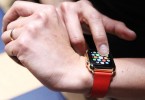Smartwatches and fitness bands, with their constant data tracking and reporting, are raising concerns about privacy, anonymization, and data use. Most consumers are comfortable with their personal information being collected, especially if they “opt in” by purchasing and wearing smartwatches and wearable accessories.
However, consumers also assume that collected data is anonymized before it is packaged and sold. Forrester analyst Fatemeh Khatibloo noted that there simply isn’t good or widespread technology to anonymize data well. The belief that the PII – personally identifiable information – won’t be sold in data packages persists even though the evidence doesn’t bear it out.
Controlling Data Use
The primary solution most data privacy experts are pushing for is government intervention. “It has to be a government role; I don’t think self-regulating trade bodies will do that effectively,” Khatibloo said.
As recently as last year, wearables’ tracked information is being used in court, most notably a personal injury suit involving FitBit information. The legalities of this use aren’t clear, according to Khatibloo: “We don’t have a good handle on the use of [wearables] data from a regulatory perspective and we need to write regulations to encompass all these…egregious and discriminatory uses of data.”
Insurance Rates and Wearables
Some companies use (and encourage the use of) fitness trackers to lower insurance rates. While encouraging employees to be active is ostensibly a good thing, there are questions about what happens if/when one’s health information gets compromised.
“Theoretically, it’s quite possible and suspect that a person won’t get a job because he’s some kind of a couch potato,” Forrester analyst JP Gownder said. “These new devices are opening up all kind of categories for potential discrimination.”
Carolina Milanesi, chief of research at Kantar WorldPanel, gave an example of companies tracking how often an employee takes bathroom, snack, coffee, or smoke breaks over the course of a workday. “Think about being the first time that data is used against a pregnant employee,” she said. “The scenarios [for discrimination] are endless.”
Yet wearables are being touted as the future. More than half of 3,104 global technology decision makers that Forrester surveyed last year said wearables are a critical, high or moderate priority for their companies.
Public Concerns About Private Information
In spite – or, perhaps, because – of the increased data collection trend, the general public is more concerned about privacy than ever before. Recent surveys by data privacy management company Truste found that 92% of U.S. Internet users worry about their online privacy and 91% said they would avoid companies that do not protect their users’ privacy.
“Smartwatches make personal tracking a lot easier,” said Julia Horwitz, director of the Electronic Privacy Information Center’s consumer privacy project. Simple tools, like a GPS or Bluetooth scanner could give a person the ability to actively track another human in real time. “As much granularity as there is in the [smartwatch] data, you can see where a person goes, where they work, what they are doing, and what they are purchasing in some cases so that you can identify someone very easily and uniquely,” she said.
Caveat Utilitor – The User Beware
For now, the onus of protection is on the user’s side
Many smartwatch and wearables companies aren’t upfront about what they do with a user’s data, or with what a user’s right regarding their data are. “Fitbit, for example, is not really clear at all what data I am sharing with my friends or with the whole universe of people who use a Fitbit,” Gartner analyst Annette Zimmerma said.
Jack Gold, an analyst at J. Gold Associates, warns consumers to be aware that sharing information to the cloud means losing control of that information. “Consumers are leery of the lack of privacy and very much should be,” Gold said. “Users should expect any app or cloud access to be less than private in the future if they want to get services, especially free services.”
Read the full article here.







